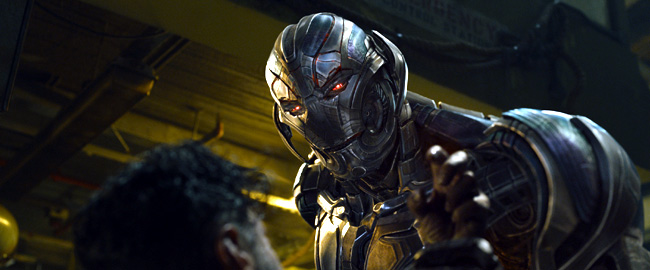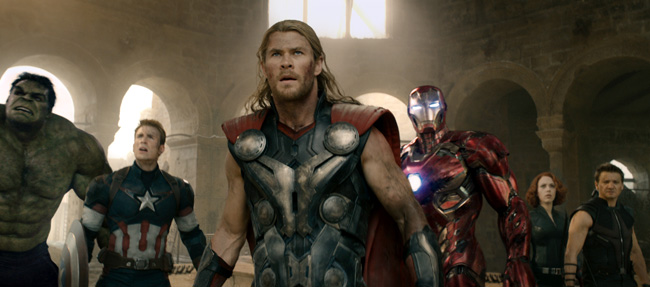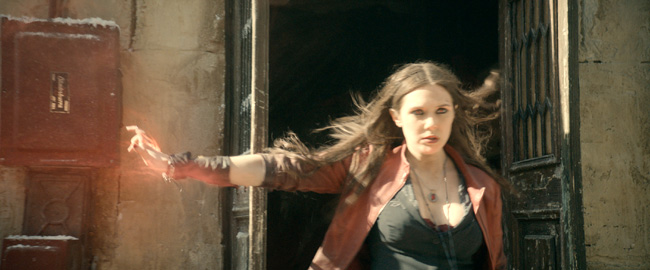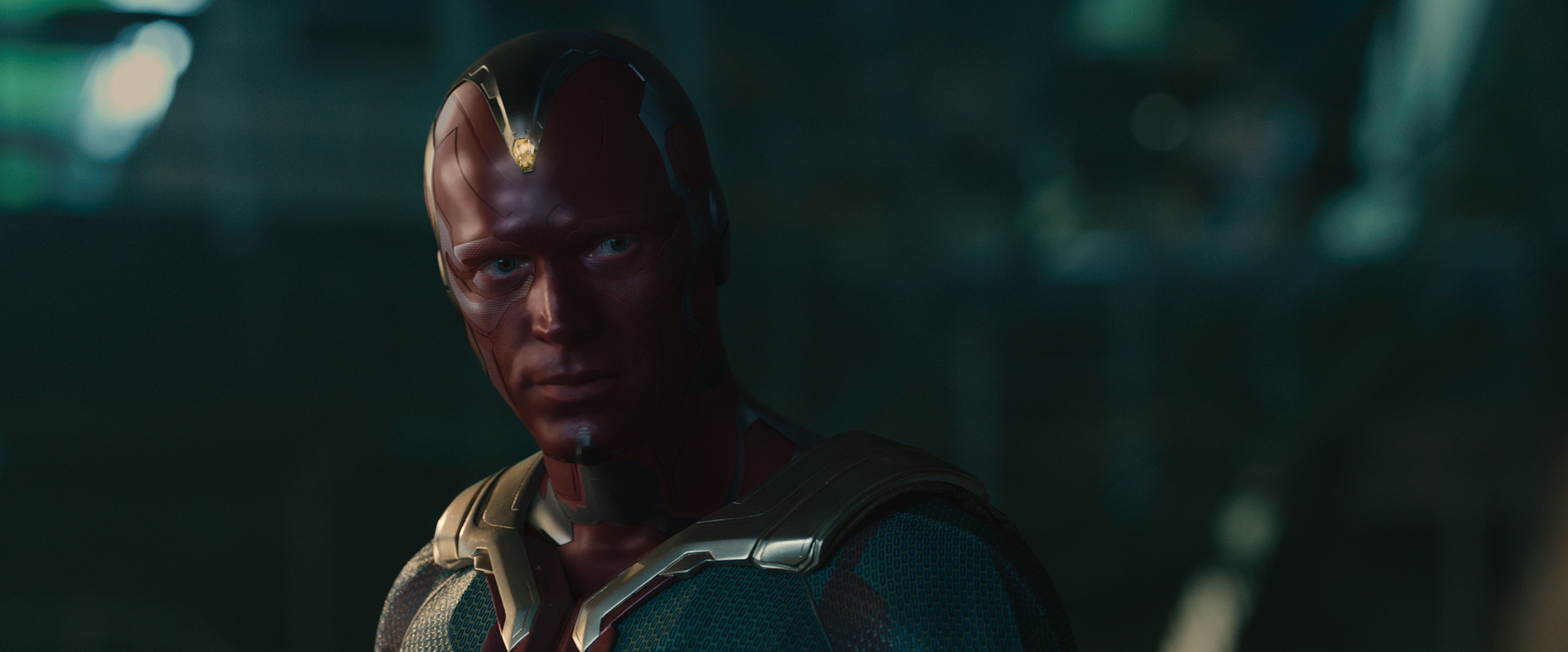CHICAGO – In anticipation of the scariest week of the year, HollywoodChicago.com launches its 2024 Movie Gifts series, which will suggest DVDs and collections for holiday giving.
Rousing ‘Avengers: Age of Ultron’ Hits Modern Society’s Central Nervous System
- Aaron Taylor-Johnson
- Adam Fendelman
- Anthony Mackie
- Avengers: Age of Ultron
- Chris Evans
- Chris Hemsworth
- Cobie Smulders
- Don Cheadle
- Elizabeth Olsen
- HollywoodChicago.com Content
- Jack Kirby
- James Spader
- Jeremy Renner
- Joss Whedon
- Mark Ruffalo
- Marvel Studios
- Movie Review
- Paul Bettany
- Robert Downey Jr.
- Samuel L. Jackson
- Scarlett Johansson
- Stan Lee
- The Avengers
- Walt Disney Studios
 Rating: 4.0/5.0 |
CHICAGO – Look. We all know sequels usually suck. And blockbuster films often get panned for overprioritizing special effects at the expense of a well-written story and character development. Even when a story in a big-budget film is redeeming, it’s practically impossible not to shoot holes through it.
Taking three years as a follow up to 2012’s “The Avengers,” “Avengers: Age of James Spader” – I mean, “Avengers: Age of Ultron” – kicks off 2015’s summer blockbuster season in true Hollywood style. Regardless of what he said or she said, you know you’re very likely going to see it in theatres or eventually at home. A perfect film it is not (as most aren’t), but an enjoyable film it definitely is for 141 minutes that certainly don’t feel too long.

Image credit: Walt Disney Studios, Marvel Studios
This sequel features a rich story that’s much deeper than surface level, memorable characters that all play a purpose and need to be there, humor appropriately dotted in to break up the action and, oh yeah, the action. I mention the action last because you’re going into a film like this fully expecting a CGI eyegasm. Anyone (moviegoer or critic) who says “Avengers: Age of Ultron” doesn’t deliver on that is just wrong. Sure, we all have opinions and we’re entitled to them, but this one’s simply a fact without room for debate.
The film starts out strong with a fight that reminds us who the Avengers are: Tony Stark/Iron Man, Bruce Banner/Hulk, Steve Rogers/Captain America, Natasha Romanoff/Black Widow, Clint Barton/Hawkeye and Thor. All the while, the sequence simultaneously uses humor (“language”! – you’ll get it when you see it) and shows off each superhero’s skills. And watch for Stan Lee’s famous cameo, of course – this time as a drunk.
It doesn’t let up as we’re introduced to a host of powerful new allies and adversaries. James Spader as Ultron certainly takes center stage from the moment he’s accidentally AI amalgamated to his plans for – dun dun dun! – yes, global annihilation. The current star of NBC’s hit drama “The Blackist,” Spader delivers some of the best voice work (villainous or otherwise) in recent memory and the evil lone rogue Ultron affords this story an omnipresent and nearly omnipotent antagonist.

Image credit: Walt Disney Studios, Marvel Studios
Ultron cleverly plays on current realities and fears and his timing couldn’t be more prescient. In a day and age of so much technology, the concept of artificial intelligence taking matters into its own evil hands certainly isn’t a new one. Though we saw it long before, AI was prominently put on the map with Skynet from Cyberdyne Systems. As you likely recall, Skynet was a self-aware synthetic intelligence that forced Earth into a nuclear winter starting with 1984’s “The Terminator”.
But the conversation happened all the way back in 1927 with “Metropolis,” again in 1951 with “The Day the Earth Stood Still” and then again and again with “2001: A Space Odyssey” (1968), “Star Wars” (1977), “Tron” (1982), “Blade Runner” (1982), “Short Circuit” (1986), “RoboCop” (1987), “Star Trek: Generations” (1994), “The Matrix” (1999), “A.I. Artificial Intelligence” (2001), “I, Robot” (2004), “Hitchhiker’s Guide to the Galaxy” (2005), “Eagle Eye” (2008), “WALL·E” (2008), “The Machine” (2013), “Her” (2013), “Interstellar” (2014) and in 2015 with “Chappie” and “Ex Machina”.
I list all of these AI-focused films not to impress you with a list of these films but to highlight our obsession, legitimate fear and the real possibility of such technology being activated and going rogue against the very humans that created it. So, giving 2015’s Marvel sequel this kind of villain is not only timely but literally hits one of modern-day society’s central nervous systems.

Image credit: Walt Disney Studios, Marvel Studios
While Ultron appears invincible and is largely everywhere, the Avengers – certainly powerful individually with their own unique skill sets – must Voltron up to take on the threat of a crazed computer who wants to holocaust the human race and reboot the planet’s flawed floppy drive. More than just the Avengers taking him on, the introduction of Paul Bettany as Vision (he also voices Tony Stark’s AI system Jarvis) is a critical one not only for this story (with his godlike Infinity Stone) but also for 2018’s “Avengers: Infinity War - Part I” and 2019’s “Avengers: Infinity War - Part II”.
If you’re not considering the Marvel universe we’ve already seen in films and comics or caring about the complicated web that Marvel will present to us in the next few years, it could be said that Vision’s role in this film might have been the most unnecessary. Sure, he floated about mysteriously and invincibly, and had a couple badass fight scenes against Ultron in which even the Avengers themselves couldn’t bring such pain.
But if this film franchise was going to end with its May 1, 2015 release and never be spoken of again, which wouldn’t happen on this planet or any other in our known universe because these films make way too much money, then yes, Vision could have been cut.

Image credit: Walt Disney Studios, Marvel Studios
By the way, 2012’s “The Avengers” had a $220 million production budget and raked in a global box-office gold mine of $1.5 billion. So, this film got a few more bucks and spent $250 million, which it literally has already made back with a $287 million foreign box-office haul before its domestic opening weekend has even had a chance to cha-ching.
While the introduction of Vision was warmly welcomed in my eyes, so is the double-edged hello to the “enhanced” (i.e. “mutant,” but they couldn’t say that) brother/sister duo Wanda Maximoff/Scarlet Witch (the daughter of Magneto!) and Pietro Maximoff/Quicksilver. Aaron Taylor-Johnson’s character is just quick, but Elizabeth Olsen’s reality-warping ability to manipulate chaos magic and control minds is fascinating, truly powerful and will grow in criticality in future Avengers films. I also enjoy this duo for their duality as they’re conflicted between being on either Ultron’s or the Avengers’ team.
I’ll remember my exultant thrill ride that was screening “Avengers: Age of Ultron” even more for writer and director Joss Whedon’s (2012’s “The Avengers,” “The Cabin in the Woods,” “Toy Story”) refreshing decision to humanize some of our superheroes. Despite her Jason Bourne-like upbringing as a cold-blooded Russian spy assassin, Scarlett Johansson as Natasha Romanoff/Black Widow is given depth and a human heart in her burgeoning relationship with Bruce Banner/Hulk.

Image credit: Walt Disney Studios, Marvel Studios
She’s the only one who can un-green the beast and I actually felt some of the pain and pleasure of their bittersweet love story. Gently touching the testosterone-raging Hulk to bring him back to a serene Mark Ruffalo both shows Black Widow as a regular woman and also the Hulk as more than just an uncontrollable monster smasher.
All the while, the war machine that is Jeremy Renner (“The Hurt Locker,” “The Bourne Legacy”) is given the opportunity both to be the fighter Hawkeye and the husband and father Clint Barton. Clint’s decision to take the Avengers to his lady’s “safe house” furthers this film’s successful ability to show the sacrificial conflict of being a superhero when you’re also just a man or a woman.
 | By ADAM FENDELMAN |


